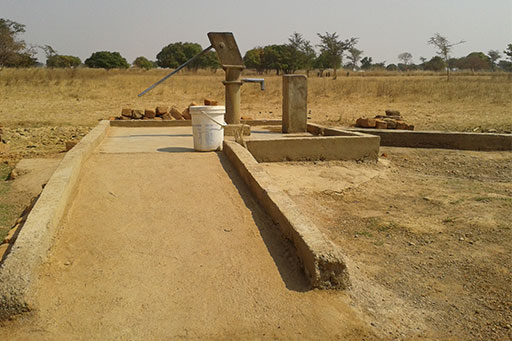4.2.1 Access to water for households
In Ethiopia, a water connection from town waterlines to individual households is common in larger towns. People in these households have the benefit of a piped water supply on their premises. In rural Ethiopia, house connection is not common and even in urban areas a large number of households use water from communal facilities. This means that when we talk about appropriate, inclusive water facilities for households we are generally talking about communal water facilities including handpumps, protected springs and tap stands. The main features of inclusive communal water facilities are:
- Paths to and from the facility are wide and have a non-slippery surface.
- Concrete ramp (Figure 4.1), wide enough for a wheelchair (minimum 80 cm) and does not slope too steeply (not more than 1 in 12, see Study Session 2, Figure 2.5).
- The concrete apron around a handpump is broad and level, with plenty of room for wheelchair users.
- Fences must not block access.

Apart from the slope and even surface, what other features of the ramp in Figure 4.1 makes it safer for users?
The raised sides help wheelchair users and visually impaired people be aware of the edges and stop them rolling or falling off the ramp. There is also a pedestal on the right for resting a water container so lifting can be split into two actions by resting midway through.
4.2 Appropriate and inclusive facilities for households
